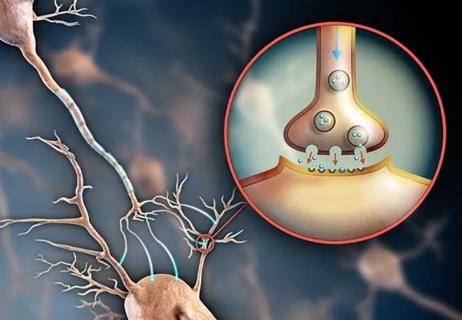An overview of evaluation strategies and behavioral intervention

Editor’s note: This is an abridged version of an article originally published in the Cleveland Clinic Journal of Medicine. The article in its entirety, including a complete list of references, can be found here.
Cleveland Clinic is a non-profit academic medical center. Advertising on our site helps support our mission. We do not endorse non-Cleveland Clinic products or services. Policy
By Humberto K. Choi, MD, Jorge Ataucuri-Vargas, MD, Charlie Lin, MD, and Amanda Singrey, PharmD
Tobacco use continues to be a major public health problem and a major risk factor for deaths from heart disease and several types of cancer such as lung, head and neck, and colorectal cancers. The prevalence of smoking has declined over the last six decades, to an all-time low of 13.7% in adults in 2018. However, nicotine dependence is still considered a common and significant clinical problem.
A number of effective therapies exist, yet treating patients for tobacco cessation remains a challenge, not only for patients, but also for clinicians, who may not be aware of effective therapies available and may fail to offer treatment. Therefore, it is important for clinicians to familiarize themselves with treatment options they can offer to every smoker.
In this article, we review behavioral interventions to treat nicotine dependence associated with tobacco use.
A proactive approach to tobacco cessation
The 2008 US Public Health Service guidelines outlined an evidence-based behavioral intervention to manage tobacco treatment in primary care called the 5-A (ask, advise, assess, assist and arrange) framework, which is still used today. Its aim is to identify every smoker, provide counseling, assess readiness to quit, offer treatment options and arrange follow-up.
Nicotine dependence is a chronic, relapsing disease driven by addiction to nicotine. A proactive approach is needed, offering treatment to all smokers regardless of their level of readiness to quit. Treatment should be individualized based on the severity of nicotine dependence and the probability of developing withdrawal symptoms, as well as on comorbidities, local resources and patient preferences.
Pharmacotherapy for tobacco treatment is based on alleviating symptoms of nicotine withdrawal with nicotine replacement therapy (NRT) and on optimal use of medications such as varenicline and bupropion. The best results are obtained when pharmacotherapy is combined with behavioral interventions.
Evaluation of nicotine dependence
The severity of nicotine dependence, risk of developing withdrawal symptoms, and risk of relapse should be determined. The Heaviness of Smoking Index is a simple and validated test to assess the strength of a smoker’s nicotine dependence. It consists of two questions, making it a quick and practical tool to administer. Other indicators of nicotine dependence include early initiation of tobacco use, difficulty attaining prolonged abstinence from smoking, history of withdrawal symptoms and continued use despite knowledge of harm.
Nondaily smokers may use cigarettes compulsively in certain situations but may not have withdrawal symptoms. Factors that influence the risk of relapse include the degree of motivation to quit, presence of comorbid psychiatric disorders, other substance use (e.g., heavy alcohol use) and living with other smokers. Nondaily smokers should be advised to quit smoking completely and should be offered assistance to do so. The need for pharmacotherapy should be evaluated on a case-by-case basis.
On the other hand, daily smokers with high nicotine dependence benefit from combination therapies including pharmacotherapy and behavioral interventions.
Behavioral interventions
Behavioral support can be provided in face-to-face meetings, group sessions and text messages. It is typically provided by specialists in tobacco cessation counseling. Interventions that combine pharmacotherapy and behavioral support increase tobacco cessation rates compared with minimal intervention or usual care. Intensive support, especially when it involves in-person contact, increases the chance of abstinence by about 10% to 20%.
Advice and counseling
Providing advice about quitting is the most common form of behavioral intervention. Even a brief verbal exchange can increase cessation rates. Ideally, the advice should be tailored to individual circumstances.
Self-help materials with additional advice and information may also be beneficial. Standardized, print-based, self-help materials increase quit rates compared with no intervention. However, individual counseling is more effective than self-help materials in promoting smoking cessation, and a more intensive counseling intervention is more effective than a less intensive intervention.
Motivational interviewing
Motivational interviewing is a more intense form of behavioral intervention, though less commonly used due to lack of knowledge or training. The aims are to increase motivation in smokers who do not intend to quit, to enhance self-control over smoking behavior and to assist in structuring a plan and techniques to control urges and cues.
Motivational interviewing is a collaborative, patient-focused counseling technique. It is designed to help people to explore and resolve ambivalence about behavior change.
Group therapy or classes
Group therapy or classes offer individuals the opportunity to learn behavioral techniques and provide them with mutual support.
A subsequent article will address therapeutics and other interventions.

Consultation service provides comprehensive care to patients with anxiety, PTSD, schizophrenia, and other high-risk disorders

Study shows a growing openness to the clinical potential of psychedelic treatments

Urine test strips and point-of-care testing may be key to slowing opioid epidemic

Study sheds light on how clinicians addressed their patients’ pain and insomnia during the pandemic

Recovery's in Reach provides treatment options, peer support to those struggling with alcohol and drug use

Experts recommend task-focused strategy for monitoring treatment

Finding changes the treatment landscape of psychiatric illness

Patients benefit when doctors disclose with care